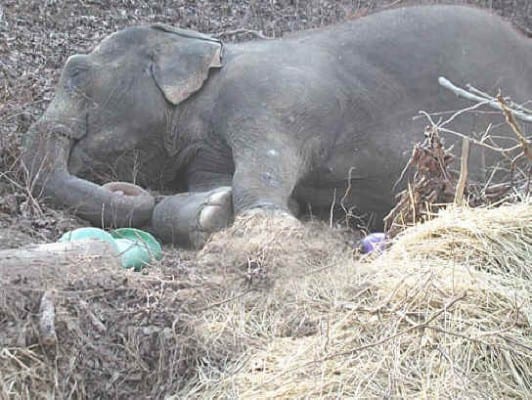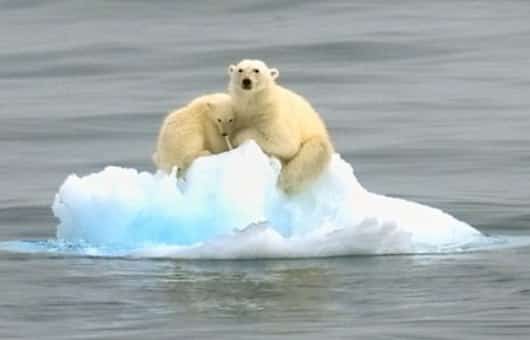Planet Earth is seen through rose-colored glasses by 58% of congressional Republicans who refuse to accept the fact that humans are responsible for climate change. And, they have a right to their opinion, same as the other side on this issue.
But, are they wearing rose-colored glasses and only fooling themselves? Or, are their scientific advisors wearing rose-colored glasses? Or, are they correct about global warming?
Whichever question is the appropriate one, the thesis of this article questions whether their scientific advisors are giving them good advice.
Here’s why: Their science advisors are smack dab in the cross-hairs of the most divisive political issue in history, which is human-caused vs. naturally caused global warming. And, it is an issue that ultimately weighs on every living thing on the planet. As such, it is the most important issue in human history. We’d better get it right.
“Doubting Republicans” readily admit the climate is changing, but they say the climate is in a natural cycle that has been going on for eons. After all, nature and God go hand-in-hand; glacial periods and warming cycles come and go as the world turns.
They also say science is too confusing, too unsettled, to know for sure whether people are the cause of global warming. “Nobody really knows for sure.” And, this is almost a valid point but not really.
And, unfortunately, too many of them opt for the easy way out by simply saying global warming is a “scam” or “junk science” or part of a “an elite conspiracy.” In fact, it is remarkable how many of the Doubt Republicans fall into this easy category.
Seemingly, the scientific advisors to the Doubt Republicans are advocates of the Uniformitarian geological school of thought that says fundamental forces that mold ice, rock, sea, and air do not vary over time. It all changes very slowly and naturally. This school of thought prevailed within the scientific community up until the late 1950s.
Still, never before has the climate changed with so much ferocity and rapidity as it is today. It dazzles scientists, but/and if it is a “natural cycle” like the doubters claim it is, then what are the forces in nature causing this sudden burst of climate change? After all, everybody can see it, as shall be described within this article.
Candidly, scientists have not been able to identify a natural cycle as the cause for the ferocity and rapidity of today’s climate change. There is no clear evidence of a natural cause, unless nature somehow mysteriously produces lots of greenhouse gases without revealing its source.
Also, the sun’s current space-weather cycle is the most anemic in 100 years. We are in Solar Cycle 24, and according to David Hathaway, research scientist at NASA/Marshall Space Flight Center, speaking at the American Astronomical Society’s Solar Physics Division: “Not only is this the smallest cycle we’ve seen in the space age, it’s the smallest cycle in 100 years,” David Dickinson, Solar Cycle #24: On Track to be the Weakest in 100 Years, Universe Today, July 29, 2013.
Nevertheless, current scientific thinking is that solar variations do not play a major role in determining present-day global warming. So, what’s up?
As things stand, the doubters rely upon advice from scientists who are counseling them to ignore the global warming issue. Why else would they so adamantly oppose efforts to tackle the issue of global warming on the floor of Congress?
List of Doubt Republicans
ThinkProgress has done an excellent job of listing the climate change doubters, including their public statements. Simply go to:http://thinkprogress.org/climate-doubt-caucus/ and scroll down to your state to see where your representative(s) stand on the climate change issue, assuming you do not live in Maine, Vermont, Massachusetts, Oregon, Rhode Island, Connecticut, or Delaware where there are no Republican congressional doubters.
According to the responses by members of the “Doubt Caucus,” most of them believe global warming is caused by a natural cycle, and not caused by humans.
In that regard, the most fascinating response by any member of Congress comes from Rep. Duncan Hunter (R-CA-50th District) who claimed at “Politics in Paradise,” a legislative forum sponsored by the San Diego East County Chamber of Commerce: “Thousands of people die every year of cold, so if we had global warming it would save lives.” (Source: East Coast Magazine, 8/25/09.)
Climate Change Events – The Factual Record
THE NATIONAL ACADEMIES WARNS OF SURPRISES & AN ACCELERATING PACE
“The current rate of carbon emissions is changing the climate system at an accelerating pace, making the chances of crossing tipping points all the more likely… surprises are indeed inevitable,” Abrupt Impacts of Climate Change, Anticipating Surprises, National Research Council of the National Academies, The National Academies Press, Washington, D.C., December 2013.
A question for science advisors to the Doubt Republicans: What is the natural force behind carbon emissions?
It sounds like a stupid question, but think about it….
GEOLOGIC TIME SUDDENLY EQUALS HUMAN LIFESPAN
According to Daniel Fagre, U.S. Geological Survey, Global Change Research Program: “Things that normally happen in geologic time are happening during the span of a human lifetime,” Daniel Glick, Signs From Earth: The Big Thaw, National Geographic, June 2007.
“From the Arctic to Peru, from Switzerland to the equatorial glaciers of Man Jaya in Indonesia, massive ice fields, monstrous glaciers, and sea ice are disappearing, fast,” Ibid.
Question for science advisors: What natural force is causing the world’s glaciers to melt so fast?
PRODIGIOUS ANTARTIC ICE SHELF COLLAPSES, WITHIN WEEKS
According to NASA, Earth Observatory, World of Change/larsenb: “Scientists monitoring daily satellite images… watched in amazement as almost the entire Larsen B Ice Shelf splintered and collapsed in just over one month. They had never witnessed such a large area… disintegrate so rapidly.”
Larsen B is the tenth major ice shelf to collapse in the recent past.
Meantime, according to scientists, all eyes are on the 37-mile Pine Island Glacier, which is 2/3rds the size of the UK, and it may be at, or beyond, the tipping point.
Question for science advisors: Why are the big ice sheets collapsing so abruptly and is there a risk that Miami will flood? What force of nature is causing this?
ALPINE GLACIER LOSSES EQUAL 32.5 FEET THICKNESS IN 10 YEARS
According to a study by the European Topic Centre on Air Pollution and Climate Change Mitigation (ETC/ACM), from 2000 to 2010, the Alpine glaciers, on average, lost more than 32.5 feet of thickness. The rate of shrinkage is increasing by the year and rising temperatures are the main explanation, according to Samuel Nussbaumer, a leading scientist with the World Glacier Monitoring Service, University of Zurich.
“These ice giants could disappear literally in the space of a human lifetime, or even less,” according to sources at the WWF’s Alpine office.
The Alpine glaciers serve as Europe’s water tower, similar to how the Tibetan Plateau, the “Third Pole,” serves as the water tower for India and China and neighboring countries. Chinese scientists report significant measured glacial melting over the past 30 years, threatening the flow of their commercial rivers and their crop irrigation.
Question for science advisors: What force of nature is causing the glaciers to disappear so fast? Assuming it is heat, what force of nature creates so much heat?
GREENLAND MELT SETS 4-DAY RECORD
Greenland in July 2012 – Remarkably, from July 8th, when 40% of the melt had already occurred, to July 12th, four days later, 97% of the island’s surface ice had thawed into slush. Most of the thaw occurred in a scant four days time, an amazing feat when considering it included the frigid high-altitude zones where temperatures do not exceed freezing.
Son Nghiem of NASA’s Jet Propulsion Laboratory in Pasadena, CA explains: “This was so extraordinary that at first I questioned the result: Was this real or was it due to a data error? (Source: National Geographic News, July 25, 2012)
Question for science advisors: What force of nature is behind Greenland’s ice melt?
ACIDIFICATION FASTEST IN 300,000,000 YEARS
Ocean acidification today is unprecedented, much faster than any time over the past 300 million years, “… at least 10 times faster than 56 million years ago,” according to Bärbel Hönisch, a paleoceanographer at Columbia University’s Lamont-Doherty Earth Observatory, Oceans Acidifying Faster Today Than in Past 300 Million Years, National Science Foundation, Press Release 12-041, March 1, 2012.
Question for science advisors: Why is acidification 10 times faster than 56 million years ago? What force in nature causes this?
WASHINGTON STATE ACIDIFICATION IS DECADES EARLY
“Ocean acidification is appearing in Washington [state] decades sooner than anticipated….” Ocean Acidification and Washington State, Department of Ecology, State of Washington, 2013.
The state of Washington was initially alerted to the inherent dangers of excessive carbon dioxide (CO2) acidifying the water when oyster larvae in hatcheries died in large numbers, threatening the state’s $270 million shellfish industry.
Question for science advisors: What natural force causes excessive levels of CO2 in the water?
MARINE LIFE THREATENED
“If the current carbon dioxide emission trends continue… the ocean will continue to undergo acidification, to an extent and at rates that have not occurred for tens of millions of years… nearly all marine life forms that build calcium carbonate shells and skeletons studied by scientists thus far have shown deterioration due to increasing carbon dioxide levels in seawater,” Dr. Richard Feely and Dr. Christopher Sabine, Oceanographers, Carbon Dioxide and Our Ocean Legacy, Pacific Marine Environmental Laboratory of the National Oceanic and Atmospheric Administration, April 2006.
Question for science advisors: What natural force is causing deterioration of marine life?
THE FUTURE IS NOW
According to Alex Rogers, PhD, professor of Conservation Biology, University of Oxford and Scientific Director, International Programme on the State of the Ocean: “The change we’re seeing at the moment is taking place extremely rapidly… We’re seeing levels of pH [a measure of acidity] in the ocean that probably haven’t been experienced for 55 million years… I find it very difficult to tell people what a scary situation we’re in at the moment. The oceans are changing in a huge way, and I am particularly worried for my grandchildren. The changes we thought would happen in the future… We’re actually seeing them now,” (International Programme on the State of the Ocean, OneWorld Video (UK), August 2011).
Question for science advisors: Are the changes expected in the future really happening now? Of course, you could not possibly agree; how could you? So, disregard this question. Sorry!
COUSTEAU SEES CATASTROPHIC COLLAPSE
According to Philippe Cousteau, we are facing the very real prospect of the catastrophic collapse of the ocean ecosystems, and the situation is so severe that we are already changing the chemistry of the ocean (Source: Oceans: Environmental Victim or Savior? By Philippe Cousteau, Special to CNN, March 27, 2013.)
Question for science advisors: What natural force is causing a “change in the chemistry” of the ocean?
NO ICE BUFFERS TO PREVENT RUNAWAY GLOBAL WARMING
Large releases of methane (CH4) have occurred many times in the past and did not result in runaway global warming. Here is why: In the past the trend was very gradual, over hundreds-to-thousands of years, allowing for a natural breakdown of the CH4 over time; whereas, as of today, we’ve already made a 3-fold move in only 200 years, and emissions are only now starting to increase in a serious way; as well, in the past, when high CH4 levels trapped a lot of heat, the heat was counter-balanced by large buffers of ice that consumed the heat to prevent runaway temperature rises (Source: “Mean Methane Levels Reach 1800 ppb,” Arctic News, June 28, 2013.)
Withal, conditions today are different because there are no huge Pleistocene glaciers to cool the Arctic Ocean if methane goes into overdrive this time around. In the Pleistocene Era, the Laurentide Ice Sheet alone was equivalent of twenty-five (25) Greenland ice sheets. This buffer to unchecked runaway global warming no longer exists, Ibid.
Question for science advisors: As such, what is the risk of runaway global warming? And, what force of nature might cause this? Or, is this simply a “not to worry” situation?
1,600 YEARS OF ICE GONE IN 25 YEARS
In the high altitudes of South America 1,600 years of ice formation melts in 25 years according to a recent scientific study, which found extraordinarily large portions of the Quelccaya Ice Cap melting away. Quelccaya is the world’s largest tropical ice sheet and located in the Peruvian Andes, (source: L.G.Thompson, et al, Annually Resolved Ice Core Records of Tropical Climate Variability Over the Past ~ 1800 Years, Science, Vol. 340, no. 6135, May 24, 2013.)
Meredith A. Kelly, glacial geomorphologist, Dartmouth College, calculates the current melting at Quelccaya at least as fast, if not faster than, anything in the geological record books since the end of the last ice age.
“Throughout the Andes, glaciers are now melting so rapidly that scientists have grown deeply concerned about water supplies for the people living there,” Justin Gillis, In Sign of Warming, 1,600 Years of Ice in Andes Melted in 25 Years, The New York Times/International Herald Tribune, April 4, 2013.
Question for science advisors: What natural force is causing the rapid ice melt in South America?
VITAL SIGNS – CO2 EMISSIONS WILL DOUBLE TEMPS
The International Energy Agency (IEA) reports the world’s carbon dioxide emissions from fossil fuel usage hit record levels (IEA: Carbon Emissions from Fuel Usage Hit New Global Record, Deutsche Welle, Oct. 6, 2013).
The IEA also warns that, based upon larger levels of carbon dioxide emissions than previously calculated, the world is on a path to an average temperature rise of between 3.6 and 5.3 degrees C, about double the target set at a UN summit in Durban in 2010.
Question for science advisors: Scientists say that a 2 degree C rise in temperature is the most the planet can handle. What force of nature is behind the reported increases in CO2, and is the IEA correct with their dour assessment?
NATIONAL AERONAUTICS AND SPACE ADMINISTRATION (NASA)
The evidence of rapid climate change is compelling:http://climate.nasa.gov/evidence
Question for science advisors: Is NASA stepping out of line?
HOTTEST SINCE 1880
The Land-Ocean Temperature Index (LOTI) published by NASA’s Goddard Institute for Space Studies (GISS) shows that November 2013 was the hottest since record keeping began in 1880 despite strong La Nina conditions, which tend to hold temperatures down (Source: Global Land-Ocean Temperature Index)
Question for science advisors: What natural force is causing record heat in spite of strong La Nina (cooling) conditions?
And, what will happen to temps when El Nino (warmer) conditions come, on average every 3-4 years? Both La Nina and El Nino are natural events but what about those temps?
CO2 EMISSIONS CLIMB 58%
“According to the Global Carbon Project, CO2 emissions from fossil fuel combustion and cement production reached 9.7 gigatons of carbon (GtC) in 2012… This is the highest annual total to date—and it is 58 percent higher than emissions in 1990, the year often used as a benchmark for emissions trends,” Katie Auth, Research Associate – Climate and Energy, Record High for Global Greenhouse Gas Emissions, Worldwatch Institute, Nov. 27, 2013.
Question for science advisors: Should there be concern about CO2 increasing by 58%, and what natural forces cause this? Or, is this simply nothing to worry about?
METHANE CLOCKS IN AT THREE TIMES LEVELS OF 400,000 YEARS AGO
According to the U.S. Department of Energy, Office of Science, as of February 2013, methane (CH4) levels in the atmosphere are measured at 1,874 ppb (parts per billion). This level, in an historical context, is three times as high as any time since 400,000 years before the industrial revolution. In the past, methane has ranged between 300-400 ppb during glacial periods and 600-700 ppb during warm interglacial periods.
Question for science advisors: Is a three-fold increase in methane a big concern, and what natural force causes this? Or, is this nothing to worry about?
MELTING ARCTIC – too vast, too pressing, and too scary to discuss in public.
Common Sense
Common sense dictates that if the science advisors for the Doubt Republicans satisfactorily demonstrate that humans are not the cause of climate change; rather, nature itself is the “force” behind climate change events, then, the “warming crowd theses” will effectively become extinct.
As such, we’ll buckle down to the circumstances, and bear the consequences, as nature brings it on!
Postscript: “Everybody, sooner or later, sits down to a banquet of consequences.” (Robert Louis Stevenson – Scottish Essayist, Poet, Author, 1850-1894)
Robert Hunziker lives in Los Angeles and can be reached at roberthunziker@icloud.com.

 Roland Windsor Vincent is an Animal Rights activist, political strategist, attorney, public speaker, and writer. He is now TGP’s Special Editor for Socialism, Environment & Animal Rights.
Roland Windsor Vincent is an Animal Rights activist, political strategist, attorney, public speaker, and writer. He is now TGP’s Special Editor for Socialism, Environment & Animal Rights.


